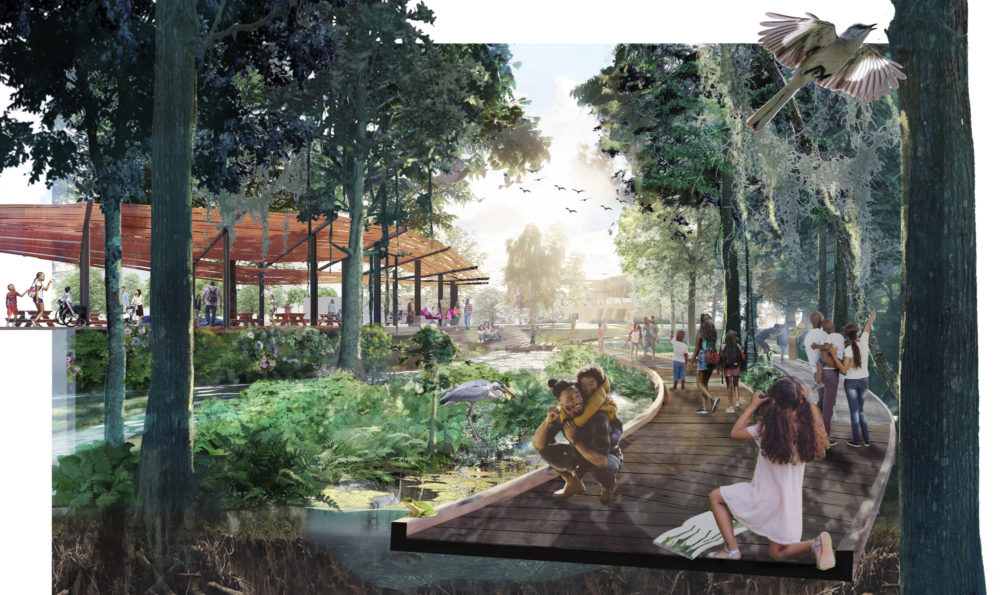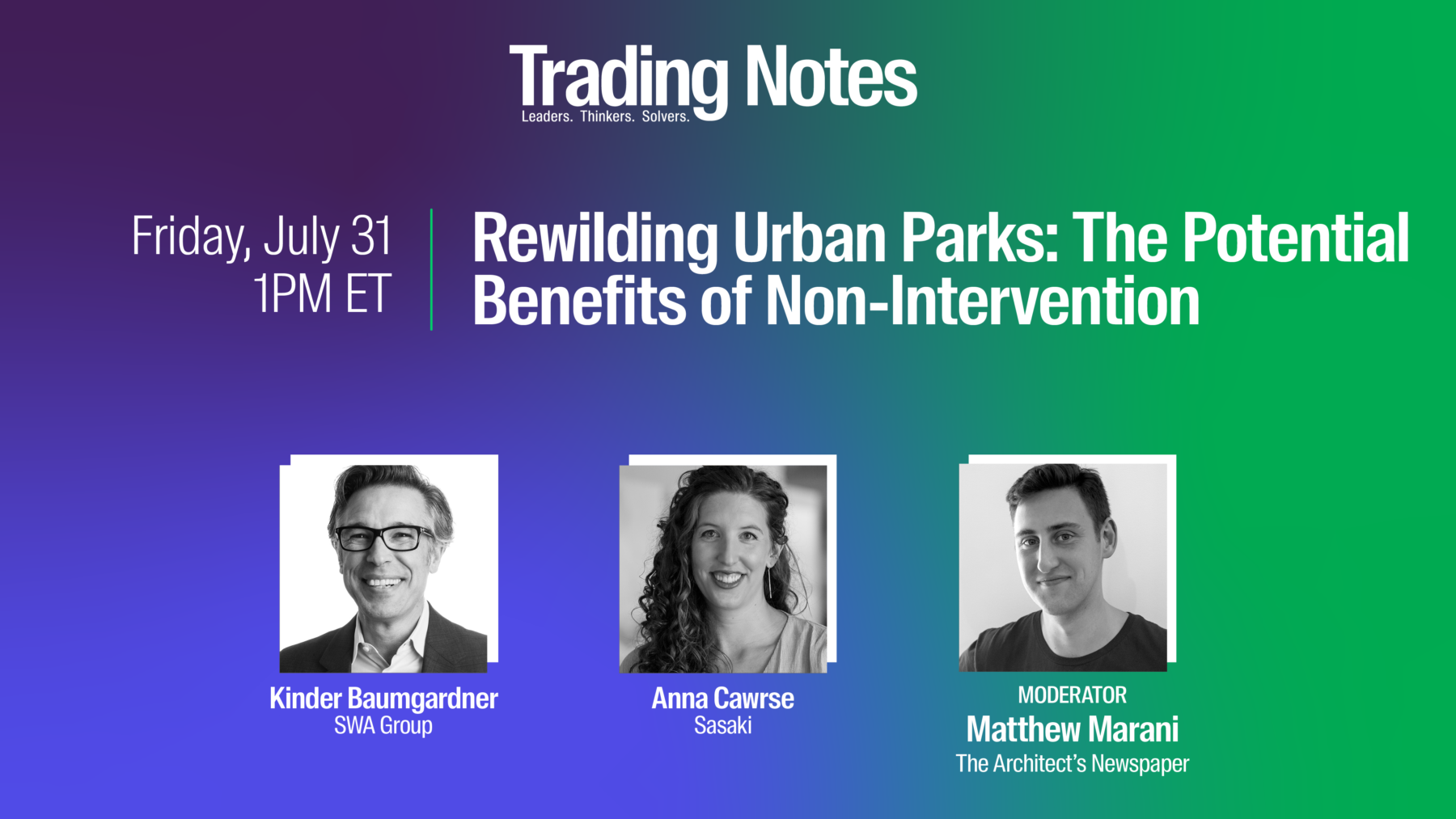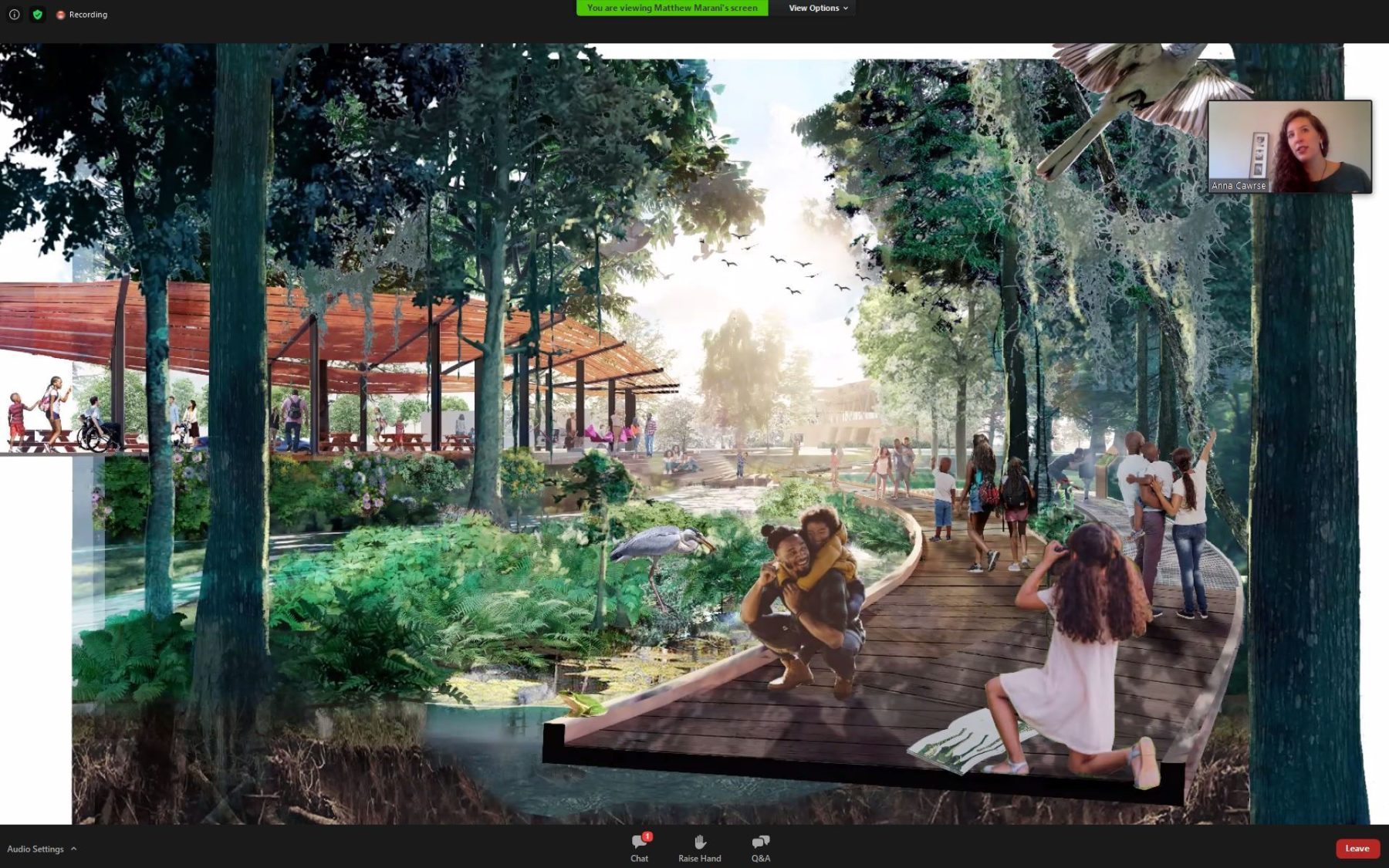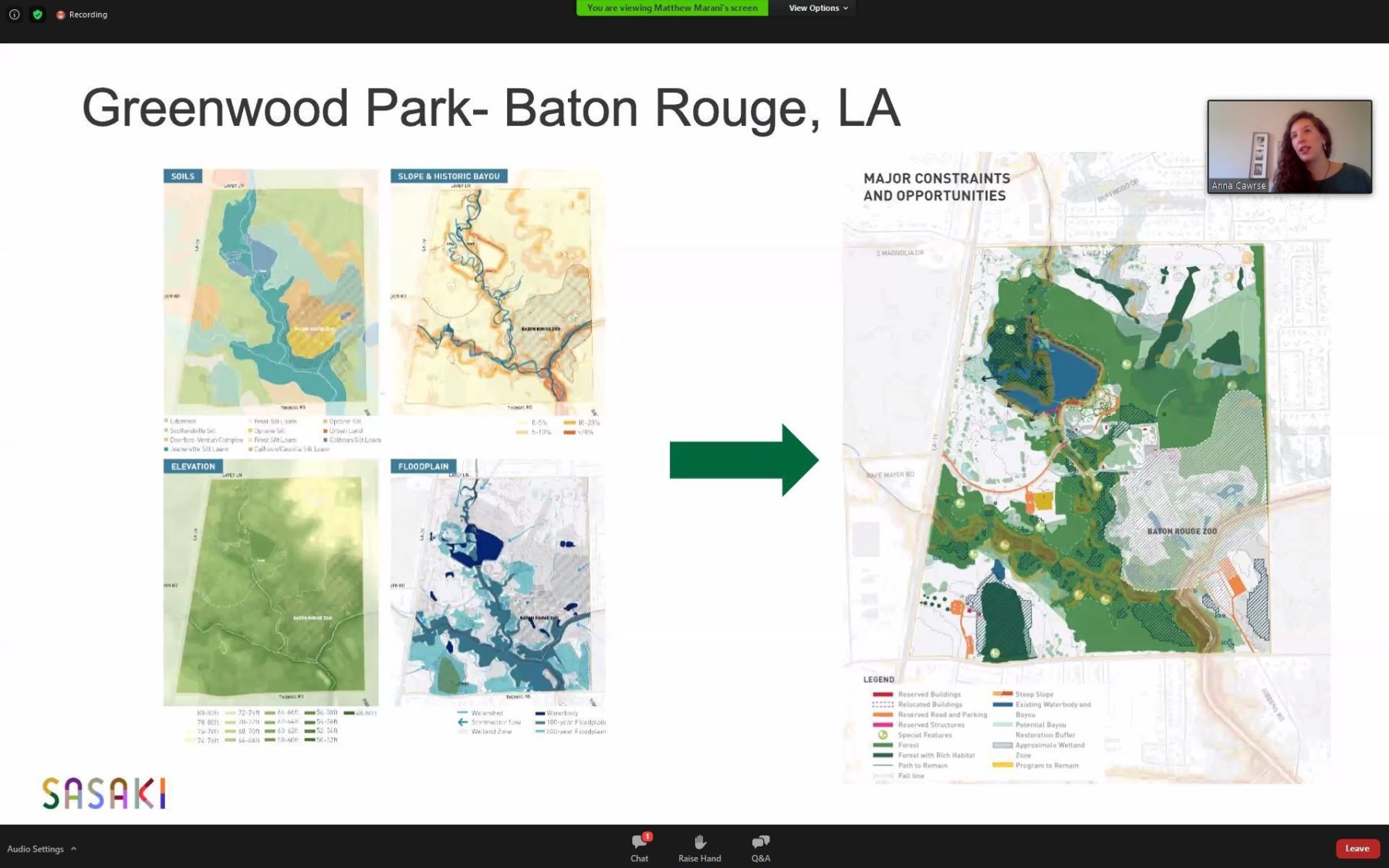
格林伍德社区公园
美国路易西安纳州巴顿鲁治市
 Sasaki
Sasaki

Senior associate and landscape architect Anna Cawrse, ASLA, PLA recently joined Kinder Baumgardner, SWA Group on Architect’s Newspaper’s webinar, Trading Notes, to discuss various approaches to urban parks in an era of Covid-19.
The webinar kicked off with a discussion about how widespread business closures during the pandemic have been putting pressure put on cities’ finances. “COVID may have exacerbated funding issues, but what we don’t want to do is create a short-term solution for a long-term problem—a problem that has been around for awhile,” responded Cawrse.
“At Sasaki, we sometimes need to think about the end of a project to inform its early designs. As we come out of this pandemic, we, as designers, need to be agents of change. We need to be advocates for helping fund parks. We can think about how we can lend our voices to cities to help influence decisions that will impact the future of parks. We need to advocate for impact fees so that as new development comes online, some money is going back into the public realm. We also need to look to other cities for creative ways they are tackling issues, like using diversified funding streams instead of just one source of money. All this work will ensure that a love of urban parks is supported by funding.”
When discussing rewilding urban parks as a strategy for designing for the pandemic, Cawrse pointed out that designers also must consider how their designs are reacting to climate change.
“It’s so easy to get micro-focused right now, so I want to step back for a minute because some of these conversations were happening pre-COVID. Climate Change is still a major issue,” says Cawrse. “It was also driving conversations around rewilding urban parks. Droughts, unpredictable storm events, and wildfires are all impacting our parks. Most park departments spend most of their money on mowing and irrigating these spaces. But by rewilding in strategic areas, we can help our parks adapt to these changes and cut costs.”
Not everyone will be quick to jump on board with rewilding strategies, however. The key to making these strategies is twofold: “We can educate the public on the ecological benefits of rewilding the park and show them the value of this strategy, but we must also educate ourselves as designers by listening to public feedback. Not everyone wants ‘wild,’ and in many places it can be viewed as unsafe and neglected,” says Cawrse.
"We need to listen to communities to understand what they need to create a park that balances both the programmed, highly-used areas with wild spaces."
Anna Cawrse
In other words, community engagement is key—not engagement in a way that checks a box that the design team reached out to the community, but engagement that informs design.
Cawrse also discussed Sasaki’s design strategies for rewilding aspects of Greenwood Community Park, a large neighborhood park in Baton Rouge, LA. Since completing the park’s master plan, Sasaki has begun implementing Phase I of the design, which includes restoring the park’s Cypress Bayou.
Community engagement was an integral part of defining the vision for Greenwood Park. In order to invite as many voices as possible into the process, engagement methods were designed to be broad reaching in terms of age and demographics by using numerous locations and tools.

Bayou promenade

Constraints and opportunities for the design team at Greenwood Community Park